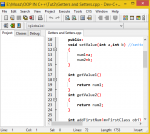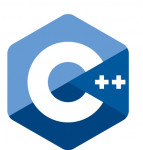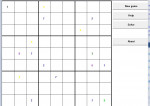In this article you will read about the rules of the Sudoku game and the algorithm, used to solve the Sudoku puzzle.
In the next two articles I'll describe the complete step by step guide about how to implement a Sudoku puzzle game using MFC.
The goal of the Sudoku game is to fill the 9x9 grid with numbers from 1 to 9 in the next way:
- Each row contains all numbers from 1 to 9
- Each column contains all numbers from 1 to 9
- Each block of 3x3 cells contains all numbers from 1 to 9
Here is an example of the solved Sudoku:








